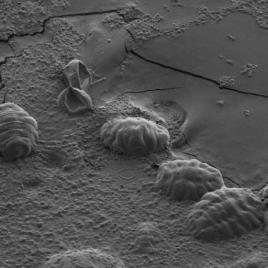It looks like temperature and humidity of a region may have stuck their noses in the evolution of the human smelling organ. Researchers examined the size and shape of noses on people of West African, South Asian, East Asian, and Northern European descent. They say the discovered differences are too great to have occurred on chance alone, and were likely a result of adaptation to the local climate in our ancestors’ home regions. For example, people who have historically inhabited warmer, more humid regions tend to have wider nostrils than those who live in a cold, dry climate. These findings could help improve our understanding of why certain health conditions are more likely to affect one population over the other. The shape of the nose and nasal cavity can also give insight into how moving into a climate different from one’s ancestors’ can affect their health.
Authors:
Arslan A. Zaidi, Brooke C. Mattern, Peter Claes, Brian McEcoy, Cris Hughes, Mark D. Shriver
Corresponding author:
Arslan A. Zaidi, Department of Anthropology, Pennsylvania State University, Email: saz5078@psu.edu
Original paper published in PLOS Genetics on March 16, 2017.

